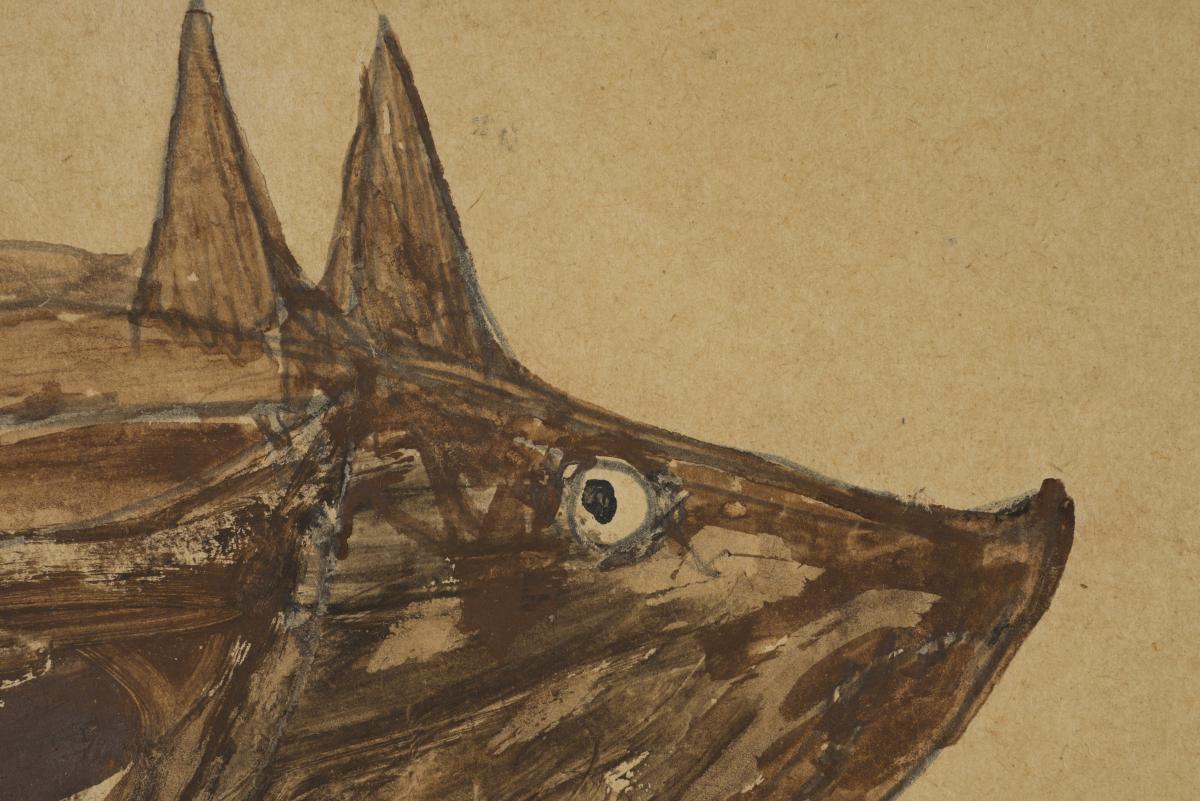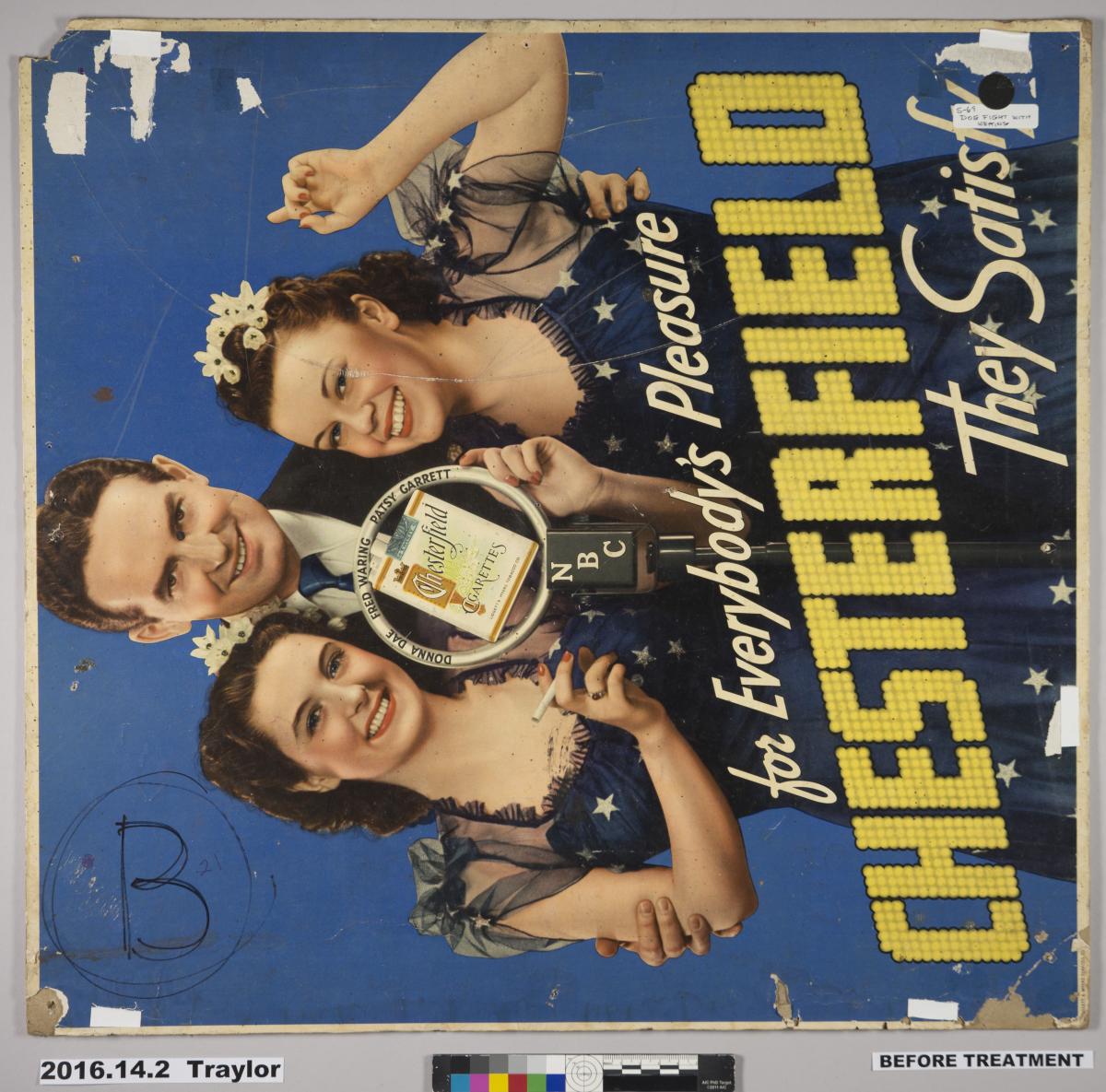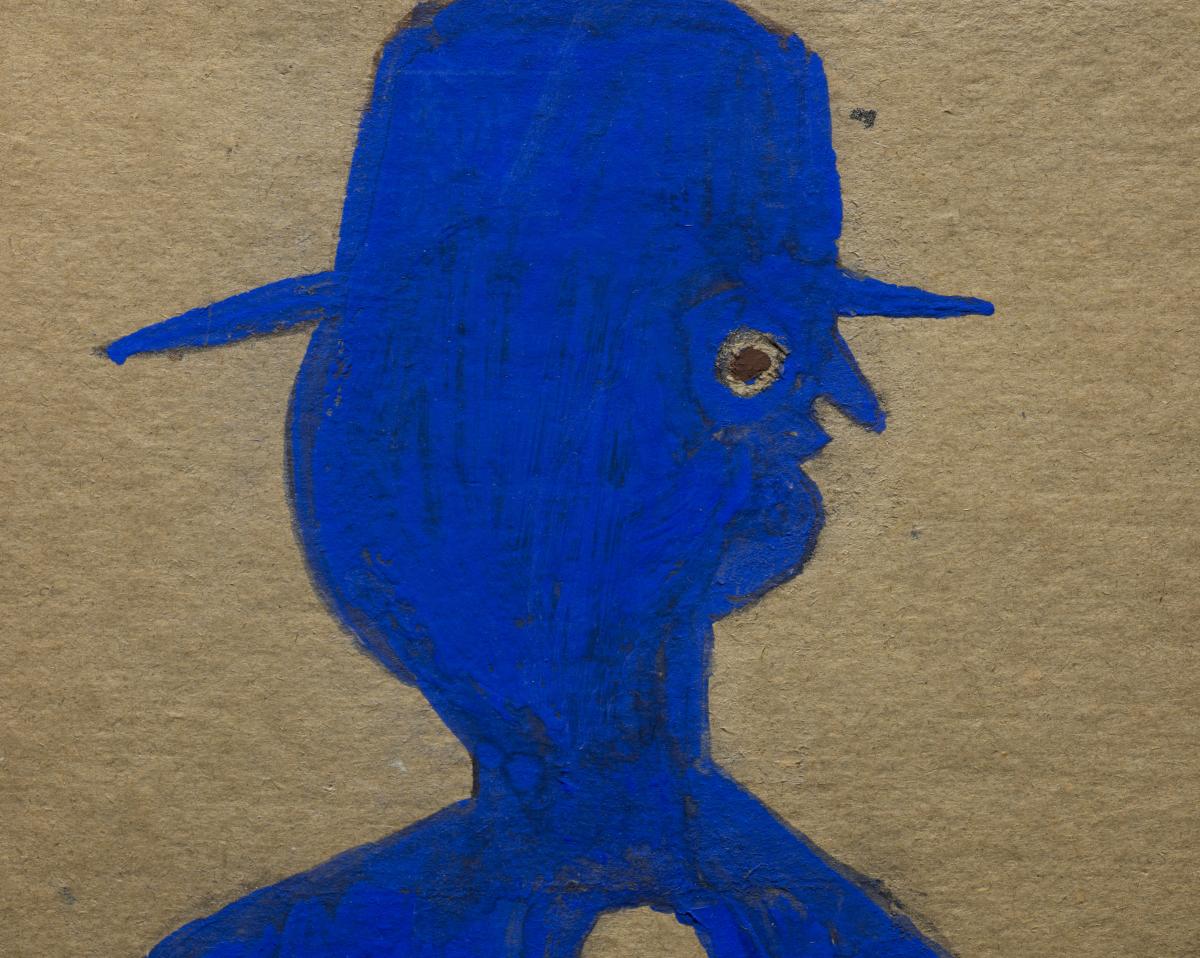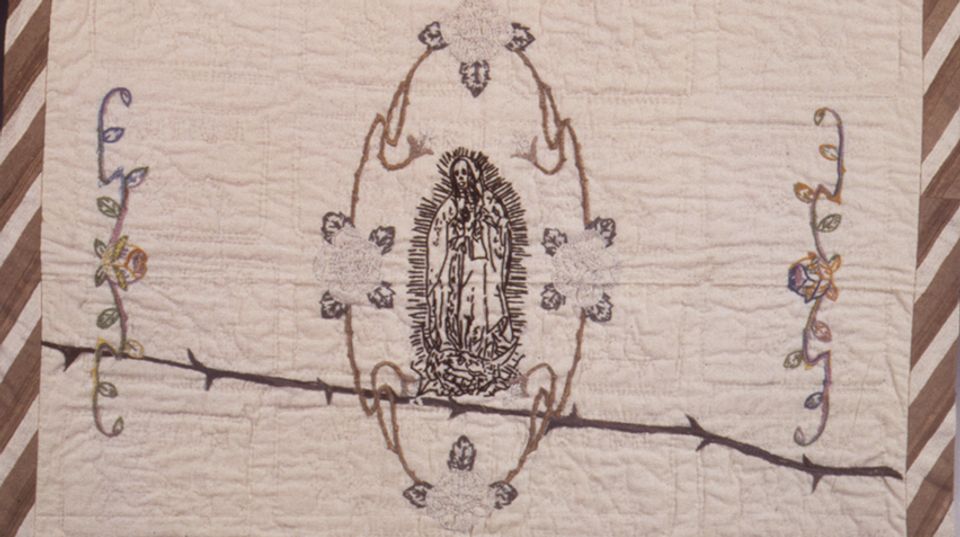
Conservator Catherine Maynor has extensive expertise caring for works on paper at the Smithsonian American Art Museum, including many by self-taught artists, whose materials often present unique challenges. Here Maynor shares some of her recent experience treating paintings and drawings for Between Worlds: The Art of Bill Traylor.
As SAAM’s paper conservator, I spend a great deal of time examining the works of art that come into my lab, destined for display on our gallery walls. It is my responsibility—and my privilege—to get really close to these works as they come out of storage and out of boxes or frames. Thorough examination is the first step to understanding an artwork’s materials, techniques, and condition, and it enables me to identify problems that require conservation treatment.
In preparation for Between Worlds: The Art of Bill Traylor, I examined the 17 drawings and paintings in SAAM’s collection and became familiar with how Traylor created his unique and memorable imagery from humble, everyday materials. For his drawing and painting supports, Traylor used discarded paperboard, such as the backs of commercial advertisements and portions of cardboard boxes. His media included graphite, colored pencils, fabricated charcoal, and ordinary water-based paint, including so-called “poster paint.”
Part of my examination process was scrutinizing Traylor’s artworks under our binocular microscope in the Lunder Conservation Center. In some artworks, the artist’s paint application varied from thin to thick. One common problem was cracking and flaking in thicker paint layers. This condition required a conservation treatment known as consolidation to prevent further loss. The distinctive physical and visual characteristics of the paint, such as the soft, matte surface seen here, were preserved in treatment.
Consolidation treatment involved carefully applying a stable adhesive while working under magnification to set down lifting paint flakes without causing any unwanted changes in the paint’s gloss, value, or hue. For this localized treatment, I often used very small brushes: 000 and smaller!
Consolidation was exacting, demanding work, but it was satisfying to know that once completed, the treatment enabled Traylor’s paintings to be safely matted, framed, and displayed. Of course, careful handling will always be required!
Want to learn more about the conservation treatment of Bill Traylor’s artwork? I'll be sharing my research at the Conservation Gallery Talk: The Art of Bill Traylor on Friday, December 14 and February 1, at 1 p.m.
For more information about the Lunder Conservation Center, check out our upcoming programs and tours and follow us on Facebook and Twitter.





















